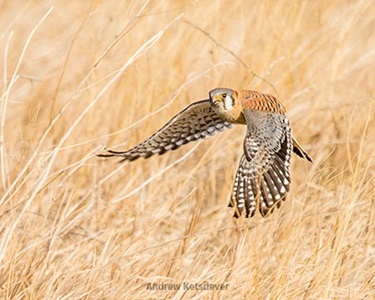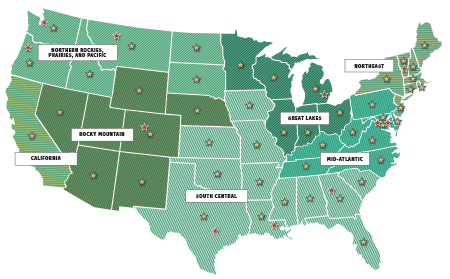One-third of all U.S. wildlife species currently face an elevated risk of extinction. Unless we take action, we risk losing our nation's treasured wildlife heritage - from backyard birds to bighorn sheep.
Habitat loss, climate change, invasive species, and emerging diseases are taking a toll on our nation’s birds, mammals, fish, amphibians, reptiles, butterflies, and bees. The Recovering America’s Wildlife Act is a bold, bipartisan solution that will help at-risk species with cost-effective, collaborative conservation.
Roughly one-third of America’s wildlife species face an extinction risk. All categories of wildlife are declining—in many cases dramatically. More than 1,600 U.S. species are already listed under the federal Endangered Species Act, more than 150 U.S. species have already gone extinct, and nearly 500 additional species have not been seen in decades and may be extinct.
Widespread loss of species will lessen our quality of life and harm local and regional economies. For example, birds, bats, and butterflies create hundreds of billions of dollars in benefits to farmers by eating pests and fertilizing plants, but all are experiencing steep declines. Outdoor recreation adds nearly $900 billion to the economy each year and is often dependent on healthy wildlife populations and habitats.

The Recovering America’s Wildlife Act will allow the states, territories, and tribes to invest up to $1.4 billion annually in proactive, on-the-ground, collaborative efforts to help species at risk by restoring habitat, controlling invasive species, reconnecting migration routes, addressing emerging diseases, and more.
Specifically, the bill will:
The Recovering America’s Wildlife Act would give the states and territories up to $1.4 Billion a year to implement their Wildlife Action Plans – their science-based blueprints for protecting at-risk wildlife. Collectively these plans identify more than 12,000 species of plants and animals in need of assistance.
The current source of federal funding for implementing these plans — the State Wildlife Grants Program — only provides around $65 million a year, split between all the states and territories. This is less than five percent of what would be needed to implement these federally-mandated plans in a meaningful way.
The Recovering America’s Wildlife Act would invest up to $98M annually in conservation work led by the 574 federally-recognized Tribes — their first-ever dedicated source of federal wildlife funding. Despite the fiscal constraints, many Tribal Nations have accomplished wildlife and land management programs that restore habitats and recover at-risk species such as bison, black-footed ferrets, and bighorn sheep.
This investment in Tribal conservation is long overdue – and an enormous opportunity. Tribal Nations own or influence the management of an estimated 140 million acres and these lands provide habitat for more than 525 threatened and endangered species.
Take the Clean Earth Challenge and help make the planet a happier, healthier place.
Learn MoreA groundbreaking bipartisan bill aims to address the looming wildlife crisis before it's too late, while creating sorely needed jobs.
Read MoreMore than one-third of U.S. fish and wildlife species are at risk of extinction in the coming decades. We're on the ground in seven regions across the country, collaborating with 52 state and territory affiliates to reverse the crisis and ensure wildlife thrive.
